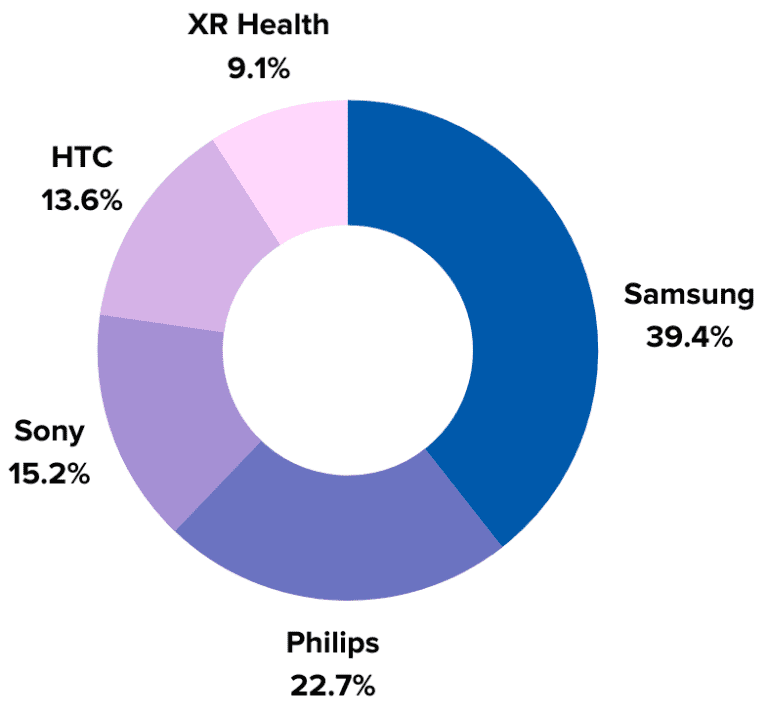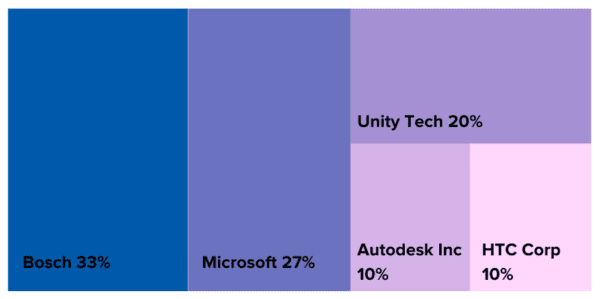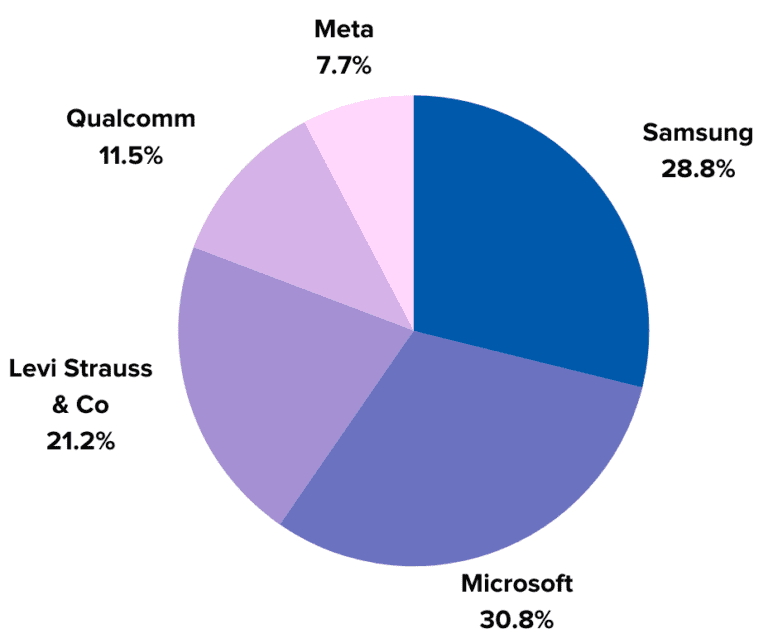Share
Share

3 Industries Where Virtual Reality Inventions are Making a Difference
Virtual reality (VR) is a widely discussed topic in today’s technology circles. There are a wide range of VR applications ranging from healthcare and retail to architecture for designing better homes or sports for athletes to train better with real-time updates. The current market size of VR is around $26 billion. It is expected to reach $85 billion in the next 5 years, growing at a rate of 23% CAGR.
Let’s take a closer look at the key application areas of VR technology, their market size, top players, and important patents filed therein.
a) Healthcare
The healthcare industry has been one of the first to adopt VR on a large scale. VR is being actively used for medical training, surgical robotics, mental health treatment, pain management and medical marketing. VR in healthcare is expected to grow at a CAGR of 38% and reach $6 billion globally by 2029. We carried out a patent search in PatSeer and the chart below shows key companies actively filing patents in the last 5 years.

Samsung is taking the lead in filing patents for inventions like predictive analysis for interactive telehealth, data processing, electronic devices for providing health information, and transmitting video content, etc.
Here is a list of a few important patents in VR healthcare from the key assignees:
- US2020327986A1 (Samsung) describes a system and method for providing an interactive telehealth diagnosis, including classification and recognition of health data, recommendation analysis for health, as well as cognitive telehealth visualization.
- US2020178885A1 (XR Health) reveals a method of adjustment for training protocols in VR or AR environments based on biofeedback.
b) Automotives
VR in the automotive industry saves millions by reducing the number of prototypes built per vehicle line. VR applications for vehicle designing include virtual prototyping and simulation technology. The global automotive VR industry market size was $700 million in 2020 and is expected to reach $14 billion in the next 5 years, growing at a rate of 45%.
We carried out a patent search in PatSeer and the chart below shows key companies actively filing patents in the last 5 years.

Some of the important patents in the VR automotive industry from the key assignees are:
- US2022138978A1 (Bosch) describes a system and method with an end-to-end two-stage depth estimation deep learning framework that takes one spherical color image and estimates dense spherical depth maps.
- US2020026922A1 (Microsoft) reveals a computer-implemented technique for selectively alerting the user of objects in a physical environment during an interaction with a virtual environment.
c) Online shopping
Customers benefit from VR as they can preview shopping items before making a purchase. For instance, you can preview furniture in your home or try makeup on your digital avatar. The metaverse is all about replicating this real-world shopping experience using VR. The global market size of VR in online shopping is projected to reach $5 billion by 2028, at a CAGR of 13%. We carried out a patent search in PatSeer and the chart below shows key companies actively filing patents in the last 5 years.

Microsoft has filed for patents that describe real-time styling of motion for virtual environments, while Samsung has a patent for reconstructing a hidden facial region of a user in an image that can be used during virtual shopping.
Some of the important patents in the VR online shopping industry from the key assignees include:
- WO2022164995A1 (Meta Platforms) depicts a real-time, direct clothing modeling for animating a subject’s avatar.
- CN112513913A (Levi Strauss & Co) Digital showroom for apparel – A tool allows a user to create new apparel designs and preview them before manufacture. Users may be able to interact with their designed apparel through images, virtual environments, or a special retail environment.
Conclusion
The capacity of VR technology is unlimited. There are many ways you can leverage it for your business. VR is integrated into our present and will shape the future by revolutionizing various industries.




